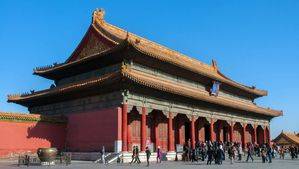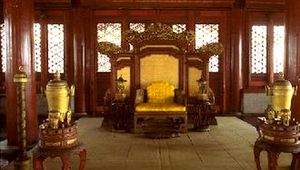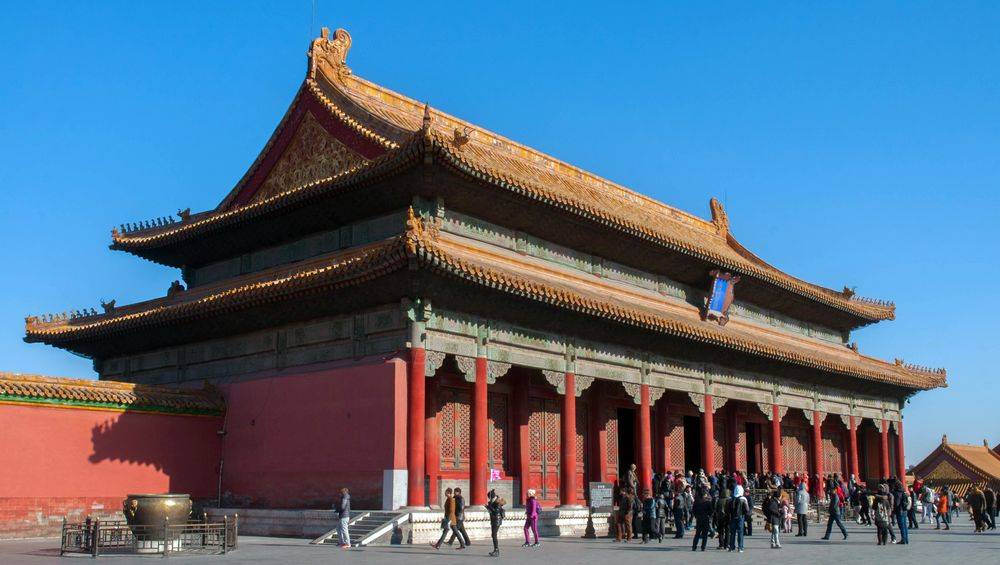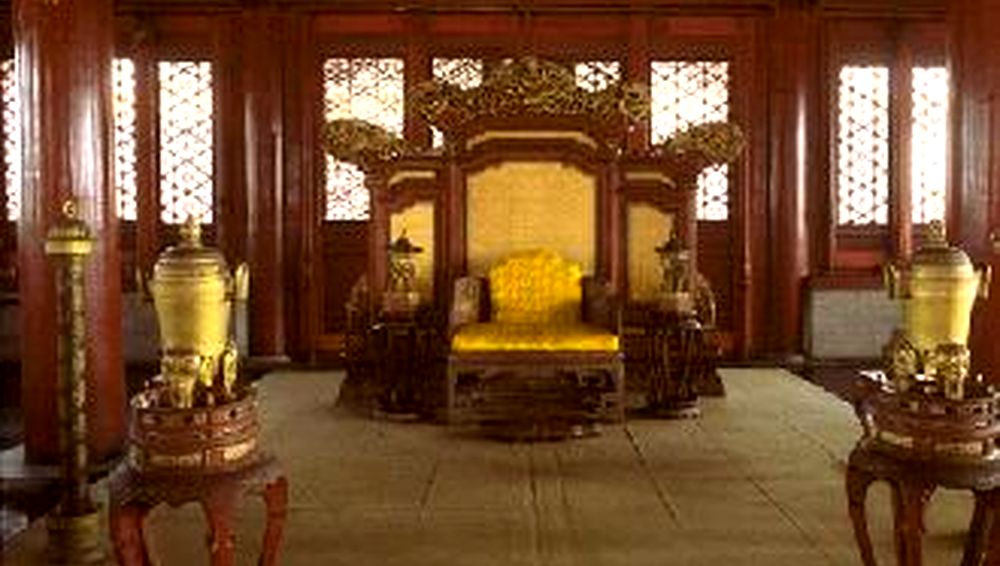Pavilion of the preserved harmony (Baohedian)

Pavilion of the preserved harmony
Third and last pavilion of the outer courtyard, it is at the north end of the three-level marble terrace. Similar to the other two in style, but a little smaller than the Hall of Supreme Harmony, it is larger than the Palace of Central Harmony. It was built in 1420, rebuilt in 1625 and renovated in 1765. Ming emperors used it to change clothes during ritual ceremonies. The emperors of the Qing dynasty changed their function: it was customary that the imperial banquets held here. These banquets were held during the great ceremonies, to celebrate the marriage of a princess for example. The emperor also used it to entertain certain high officials, deserving and their families, those who had served the imperial government well. Every year, on the eve of New Year's Eve, a banquet was held to honor the governors of the provinces, the Mongol princes, and some civil and military officials.
In the middle of the Qing Dynasty in 1789, Emperor Qianlong decided that the final phase of the compulsory National Examination, which had enabled a large part of the Chinese population to be marked, would be held in the pavilion of the " harmony preserved. It was the equivalent of the highest level of the system of imperial examinations at the national level, and the emperor thus honored the first ten candidates selected by reading the papers they had submitted.
On rainy days, visitors will have the chance to enjoy the spectacular view of the thousand dragons vomiting water. There are a total of 1412 marble dragon heads along the columns of the three-tiered terrace leading to the three pavilions. Chinese craftsmen skillfully combined the storm drainage system with these architectural features.

The throne of the preserved harmony pavilion
It is also worth noting the presence of an enormous marble sculpture representing nine dragons playing with pearls. It is the largest stone sculpture in the Forbidden City. Sculpted under the Ming Dynasty, it was re-sculpted under the Qing Dynasty. During these dynasties, anyone who was surprised to touch this sacred stone was punished with death. Weighing about 250 tons, the marble slab is 16.57 meters long, 3.07 meters wide and 1.7 meters thick. The huge stone that served was transported here from Fangshan, 70 kilometers from Beijing. This difficult task lasted about a month and required the use of 20,000 men and thousands of mules and horses. It is said that it was done in winter, and that a well was dug every 500m all the way. By extracting the iced water and spreading it on the ground it formed a frozen road on which the rock could slide.
Leaving the Pavilion by the North
Outside the pavilion of the Harmony Preserve, in the direction of the North, the visitor leaves the outer courtyard and stands facing the door of the Celestial Purity, which marks the entrance of the private parts dedicated to the emperors. Between the two, the visitor is in a small rectangular court decorated with two wells, the door named Longzong (left) and the door Jingyun (right). There is also the Privy Council Office, a small long building created in 1729 to settle urgent matters, when Qing troops fought against the Mongols in northern China. Subsequently this office was strengthened and converted into a black cabinet of the emperor. He then had even more power than the classic imperial council, but that was all there is more secrecy. Only the emperor and a few authorized persons had the right to go there, not all others were to linger in the corner. Symmetrically to this office is the building named Jiuqingzhifang. It is simply a place of restoration today.
See too:
Back to the list of the pavilions of the forbidden city






















